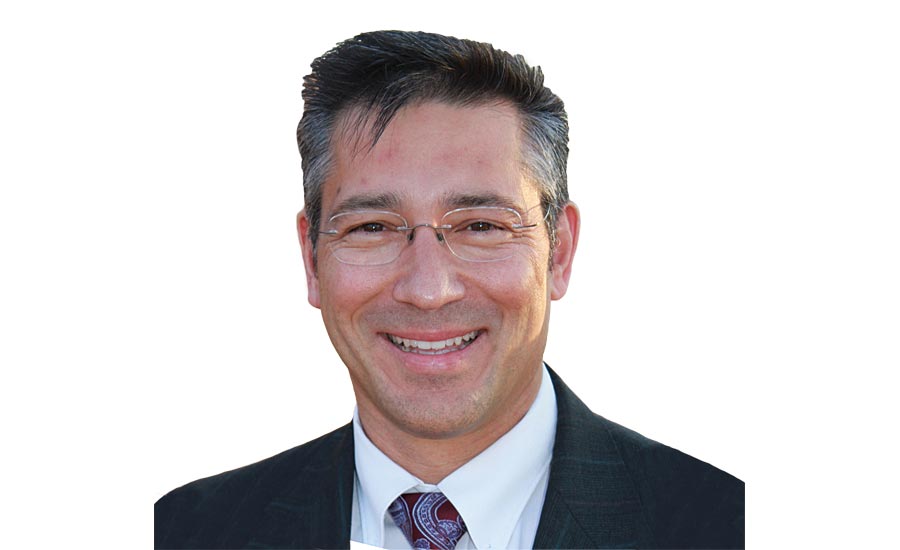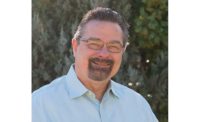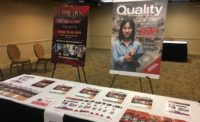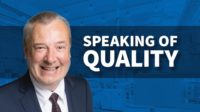When did you join ASQ?
Let’s see, that would have been in 2004. I started my career as a chemist, and I spent about two decades as a member of the American Chemical Society. When I switched careers at BMW from laboratory management to quality and Lean Six Sigma, I thought it would be great to find the American Quality Society, but of course I found the American Society for Quality.
Since then, what do you think the biggest benefit has been?
Growing my network. When I first started to participate I was working in a new area and a new field, and learning more about the technical side of things was helpful and learning best practices from others. But then over time, the focus became more on my network, and who it is that I knew who would be able to help in more specific situations.

Eric Hayler, past chair of ASQ and Lean Six Sigma Master Black Belt, BMW Manufacturing, and ASQ’s 2017 chair.
How did you transition into working with more of the leadership side?
After attending section meetings for a few months, I was invited to join our local section board and I became the Arrangements Chair for the Palmetto section in Greenville, SC. I enjoyed it very much, and went on to other roles. I eventually become secretary, treasurer and chair. After I was chair, I started working in a more regional capacity. I was deputy regional director for a couple terms, and then regional director for a couple of terms.
How did you like getting involved in more of a higher level of the organization?
I really enjoyed having the opportunity to expand my network, and to understand quality better and the impact of quality around the world. I’ve enjoyed being able to participate in a more global way, and across multiple sectors. Not only speaking about quality in manufacturing, but also quality in healthcare, education, as well as government. I’ve had the opportunity to do volunteer work in those areas as well.
Have you been to all the conferences since you started in 2004?
Definitely. I haven’t missed a world conference since I joined ASQ. That’s been one of the biggest benefits, getting together with all the high-energy people, coming from all areas of ASQ, and all parts of the quality community.
Do you have a favorite memory from your work with ASQ so far?
There’s been a lot of things. The most recent one was the world conference last year in Charlotte. It was during my tenure as chair, and it was in Charlotte, about only an hour from where I live in Spartanburg, SC. It was like having a home court advantage. It was exciting to have the whole quality community right here in my backyard, and to have the opportunity to lead and to participate at that level.
How would you suggest people get more involved in ASQ?
For starters, showing up. Coming to events, coming to section meetings, meeting people and working together. That worked well for me in the section capacity in geographic communities but it also worked well for subject matter specific technical communities. Professionals come together to focus on an industry basis. For example, I work very closely with my colleagues in the Automotive division. Other technical communities focus on specific quality tools and methods. For example, I participate with the Lean division and the Six Sigma forum.
The other thing I would advise people to do is say “yes.” When somebody invites you to do something, say “yes.” For example, if it’s presenting at a conference, and that’s not the most comfortable thing in the world for you, it’s an opportunity to get past what’s stopping you.
Have you done a lot of public speaking yourself?
I have. These days I give keynote presentations on a regular basis. I have had the chance to give presentations all around the world. Last year I gave several presentations in the Middle East, and I’m hoping to be in Asia later this year.
How has ASQ changed since you’ve been involved?
Right now things are developing quickly. We’re in the middle of a substantial transformation. It’s something that we’ve been trying to organize for some time. My role as chair has been a little bit like a relay race. You’re in the lead role for only a year, although there’s a three-year progression. You’re in a supporting role for two years. You grab the baton from the previous person and then pass it on to the next. For example, a couple years before I took over we began working on long-term strategy. During that time we put together a series of five year goals, big, hairy, audacious goals. We said to ourselves, how can we do this? To continue to do business the way we’ve been doing it for the last 10 or 20 years is clearly not going to get us there. What are we going to do? From many conversations, we came up with literally thousands of different ideas. We couldn’t possibly do all of those things. On top of that, many conflicted with each other. We had to make a decision. The decision that we made was based on detailed research.
My immediate predecessor, Pat LaLonde, during her term got this work for the transformation rolling, and we began our research initiative. During my term the research initiative culminated, and from there we created recommendations for changes. I was really delighted with the results. Many things we decided on were not particularly new ideas, but some were. But it was much more than that. Out of all the thousands of directions we could be going, we picked, we made a decision. Towards the end of last year, we put together an action plan and got started. This year the focus is on the execution of our transformation.
Were there any goals that you were particularly excited about?
Yes, there are at least two major shifts in the way we’ll be operating. One has to do with bringing excellence and quality together. The other is having a more concerted effort on organizational products and services.
Of course we want to promote ASQ, we want to grow our business, and we want to see quality expand in the world. We recognize that in order to improve ASQ’s brand, we have to improve the brand of quality. One of the ways to do that is to bring some of these other concepts together.
Were there any things during the year that were particularly challenging during your role as chair?
Growing membership. Quality is more relevant than ever in the world, yet our society, like many membership organizations, has been experiencing a decline in membership over the years in a consistent way. It’s been very difficult to impact that pattern. Rather than sales and marketing, we’re looking at more of a focus on how we can enhance the value that we provide to our customers, both on an individual side and on organizational side.
Now that you’re past chair, how has it been being past chair? Is it a little more relaxing?
It’s relaxed in the sense that, as chair, you’re leading the board and it’s important to be a good facilitator, to guide the board and the organization through decisions. In that process, I feel like I have to have a certain degree of impartiality and not dig in and advocate too much for a particular direction. I try to provide a balanced perspective for the organization. Now as past chair I’m free to advocate more strongly for the solutions I feel passionately about.







